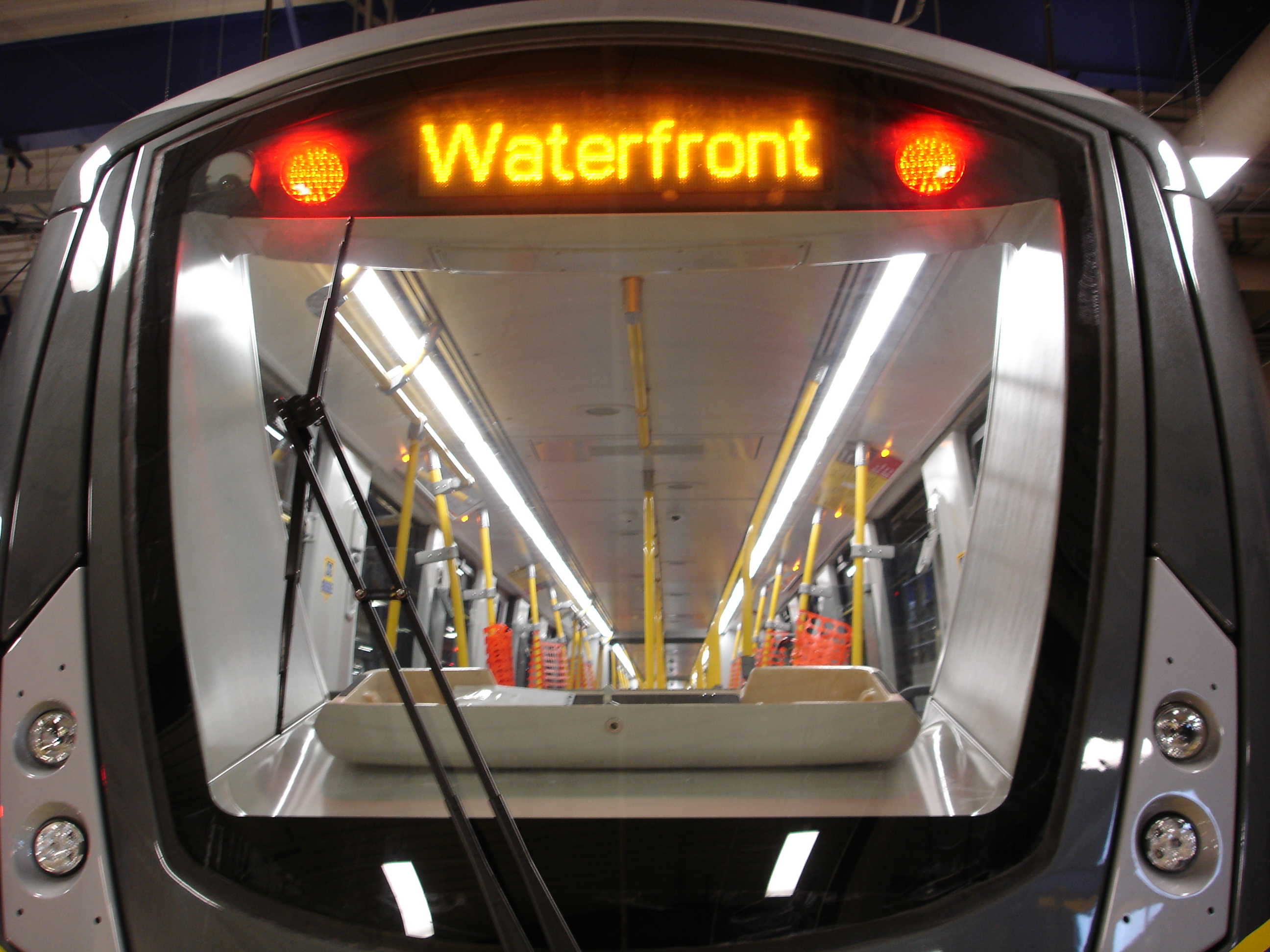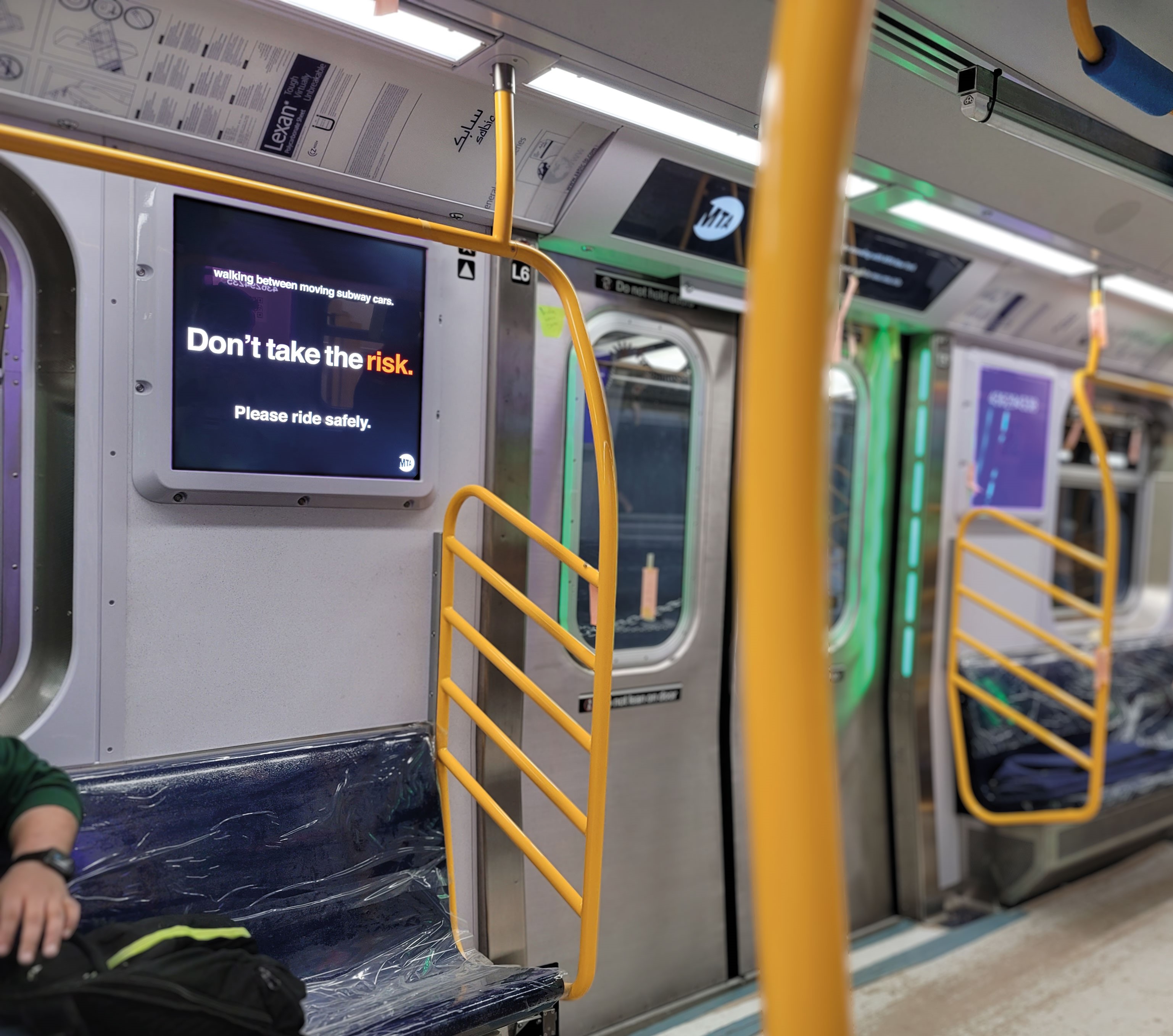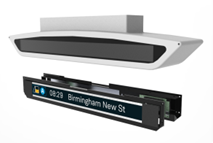Infotec's on-train systems use both both LED and TFT displays tested to vehicle specification EN50155. Using a modular approach, the designs can be scaled to suit the wide variety of mounting methods that are seen on-vehicle.
An on-train system can be as simple as a single media only display, or extendable up to a full function multiple vehicle passenger information, media and audio system.
On approach, where possible and appropriate, piggy-back off systems and data already available. These supplementary systems and data can be located either on or off the train. A high level of integration and flexibility reduces both install and operational costs by re-using what might already available. This allows Infotec systems to be used in the widest range of applications from new build to retro fit or to simply supplementary existing systems.
Systems that typically might already be available and are being used on UK projects are:
· On vehicle Ethernet networks or WiFi
· Off train communications systems
· GPS location
· Audio systems
The data that might already be available and could be utilised:
· Location (GPS location)
· Headcode journey information
· Operational systems (for example selective doors, door open, toilets engaged)
· Real time sources (for example Darwin, Worldline, Ketech, Bus, TfL Tube, etc.)
Infotec's on-train system uses a publisher/subscriber data architecture based on standards from the IoT (Internet of Things) making data sharing easy, defined and transparent. Allowing systems either on or off the train to share their data using this globally accepted protocol ensures our offering is flexible, adaptable and future-proofed. Our system, our smartPID displays and all other systems we are sharing data with can consume and publish data using this Publisher/Subscriber model which is based on "topics".

Publisher/Subscriber model
· The publisher subscriber method is common and ubiquitous.
· Publisher publishes its data to a topic.
· Subscribers subscribe to the topic.
· When the publisher changes the data all the subscribers get that data.
· The publisher does not know and does not care who, or how many subscribers subscribe to its topic.
· Data is delivered to subscribers in real time.
Topics
Topics are place holders for publishers to put their data. Topics are like file directories and arranged in a hierarchical way. An example is shown below:
/train/158010/currentJourney
/train/158010/doorStatus
/tfl/tubestatus

SmartPIDS
All Infotec displays irrespective of type or function belong to the smartPID family. Infotec is the OEM for all its smartPID displays.
A smartPID is simply a device that intelligently obtains its configuration and content from open and defined data sources, (i.e. via Apion). This data can tell the display what it is and what to display, making smartPIDs, easy to deploy, ultra versatile and adaptable for the environment they are installed.
The data consumed by a smartPID display can be retrieved from sources both on or off the vehicle, these sources of the data can be generated either by Infotec or 3rd party systems.
smartPID displays also publish data and information to be consumed by other systems, again these consuming systems can be Infotec or a third party.
Infotec has a comprehensive range of displays which can be deployed as COTS equipment, or easy redeveloped in an efficient way to reduce the on train installation costs, especially in the retro-fit market.
All displays include the same control hardware and software and interface to the external systems in the same way, irrespective of the display function.
Ethernet networks, Off train comms and Location services
Infotec's approach can be used with its own dedicated networks, off train comms and/or location services. But in many installations, we would expect the system will use and extend the current ethernet backbone already deployed on the train.
All smartPIDs are IP based devices and can be either wired or Wi-Fi, or a mixture dependent on the most economical deployment strategy.

Summary of key features
· Journey tracking and operation service levels
o Full journey detail status.
o Basic – simple route database.
o Real time – journeys will real time overlay.
o Headcode/UID resolution.
· Open architecture
o Publish/Subscribe data model - IoT/ MQTT.
o Dynamic or fixed IP addressing schemes.
o Integrates in existing systems (use what you already have).
· Open Data
o All data is available to/from any compatible on or off train systems.
o Data payloads/protocols published and documented.
o Use what is already available.
· Context sensitive content
o Geofences – train position.
o Vehicle aware – on train location.
o Playlists & campaigns.
o Full media and advertising capabilities.
o Library of presentations and templates.
o Configurable branding.
· Content
o Notices (text and audio).
o Images/Video.
o CCTV stream – Passenger Awareness Monitor (PAM).
o Playlists & campaigns.
o Comprehensive context filters.
· Audio integration
o Context sensitive announcements.
o Text to Speech.
o Uploaded pre-recorded announcements and triggers.
o IP based systems.
· Javelin – Integrated back-office system (Integrates with the current SWR Javel station system)
o See where the train is
o See what RTIS is doing.
o Manage the content.
o See and manage faults in real time.
· Ease of installation maintenance
o Wide range of power options including PoE.
o Data (wired or wireless).
o Zero configuration both for installation and maintenance replacements.
o Remote monitoring and automatic configuration and upgrades.
o Ease of adding additional displays.
· smartPID hardware
o Same core hardware on and off the train
o Comprehensive range of display standard type of display hardware
§ TFT
§ LED
§ E-Ink
o Design easily adapted for bespoke solutions.
o Multiple connectivity options
§ Ethernet
§ 4G/WiFi or RS485
o Smart cable management.
